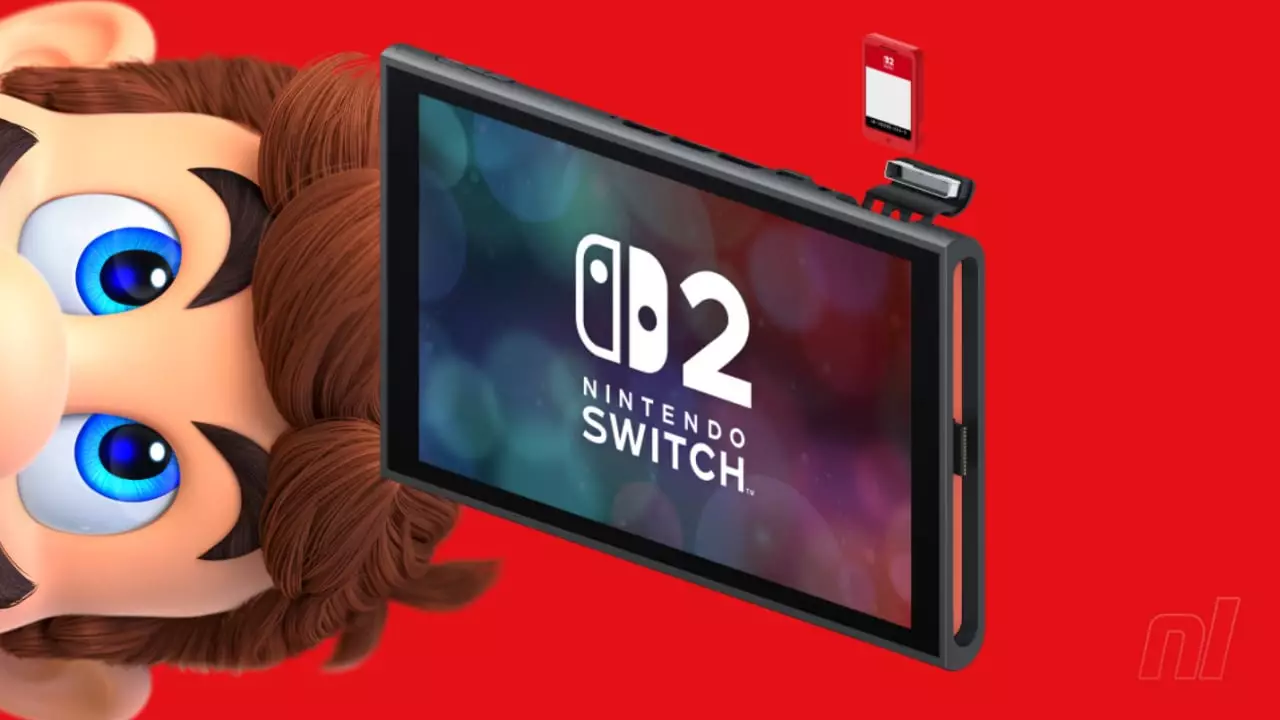Nintendo has a reputation for innovation, yet their latest move with the Switch 2’s “Game-Key Cards” provokes a mix of intrigue and skepticism. Unlike traditional physical game cards, these new offerings position themselves as a digital access key—stirring up discussions on the purpose and value of physical gaming. While the allure of tangible gaming remains strong among enthusiasts, the introduction of these Game-Key Cards may represent a troubling trend in the industry: the diminishing importance of owning a physical copy of a game.
The premise resembles a bittersweet reality. When players insert a Game-Key Card into their new Switch 2, it serves merely as a gateway to download the game data via the internet. The design merits both curiosity and critique, as it raises pertinent questions about the future of physical media in gaming. Will we eventually phase out actual game cartridges entirely in favor of digital downloads, masked under physical appearances? This incarnation of a hybrid approach has sparked debates among consumers who treasure their collections.
Is This Progress or Regression?
Critics might contend that Nintendo has merely repackaged a commonly criticized approach—putting a digital code within a physical box—while stripping away its inherent value. The Game-Key Cards do not contain the full game data but require an online connection for downloading. For those who appreciate the idea of having physical game cards, this new model feels like a misstep. Instead of providing a more robust physical presence, it stands as an ephemeral placeholder, compelling gamers to maintain consistent internet access to enjoy their purchased titles.
Moreover, consumers are left in the lurch regarding storage. With the rise of digital gaming, space management on devices has become a focal concern. Nintendo’s recommendation that users ensure ample space before attempting a download adds to the complexity. Players who have traversed the switch from the original Switch to the Switch 2 may already grapple with tough storage decisions. The introduction of Game-Key Cards could exacerbate that struggle, compelling players to frequently manage their gaming library.
Marketing Tactics or Consumer Manipulation?
Nintendo’s maneuver to offer Game-Key Cards raises the question of whether this is a savvy marketing tactic or a calculated move to sidestep the costs associated with producing full physical games. By offering a digital key in exchange for the physical presence of a cartridge, the company seems to tap into the longstanding debate between retail and digital consumption. It appeases traditionalists by providing the illusion of a physical product while freeing developers from the financial burden of physical game production.
While savvy from a business standpoint, there’s a nagging concern about consumer rights and expectations. The industry has demonstrated time and again that the fine line between innovation and exploitation is razor-thin, and consumers may feel affronted by what this model implies: Are players simply paying for a distant access point rather than an outright purchase?
Rethinking Physical Ownership
In a world increasingly driven by downloads and immediate access to content, ownership has shifted. Where once having a game in your hand felt like a badge of honor, today’s landscape is leaning towards accessibility and convenience. With Game-Key Cards, Nintendo is navigating this transitional space; however, it leaves behind longstanding fans who value the ritual of physical ownership.
Ultimately, the appeal of the Game-Key Cards may only resonate with specific players, leaving many others baffled and dissatisfied. Japan’s gaming culture glorifies physical copies as eternal tokens of appreciation for the art. With this new model, Nintendo risks losing a piece of that culture and instead alienates its ardent supporters.
With ongoing developments and potential refinements, only time will reveal whether Game-Key Cards become a celebrated innovation or a cautionary tale in the saga of gaming evolution. What remains undebated, however, is that visible transformation within the gaming space is inevitable.

